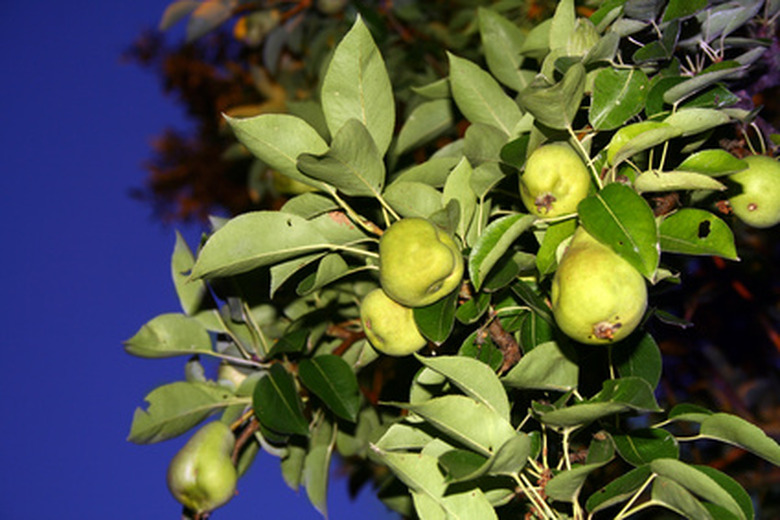Pear Tree Leaf Identification
Whether you want to understand fruit tree botany or are just want to identify wild pear trees for foraging purposes, knowing how to identify a pear tree by its leaves is a useful skill. Identify pear trees in the spring when the leaves and flowers emerge. By summer you'll see fruit developing and can identify the tree by the fruit.
Color
Pear leaves are dark green and glossy. They have lighter green veins that run down the center of the leaf and branch to the sides. The undersides of the pear leaves are matte, not glossy. They are also lighter in color.
- Whether you want to understand fruit tree botany or are just want to identify wild pear trees for foraging purposes, knowing how to identify a pear tree by its leaves is a useful skill.
- The undersides of the pear leaves are matte, not glossy.
Shape
Pear leaves look like teardrops, with pointy edges and a rounded base. The leaves have a lightly serrated edge, with no jagged teeth. The leaves are symmetrical, meaning that the right and left halves have the same shape.
Arrangement
Pear leaves grow on either side of the stem in an alternating pattern. This gives them a staggered appearance in contrast to opposite-arranged leaves, which appear along the stem in pairs–one on the right directly across from one on the left.
Size
Pear leaves average 1 to 4 inches in length.
Flowers
Flowers will help you identify pear trees. In the spring months, the trees display small creamy white flowers. The flowers will either emerge just before the leaves do or at the same time they appear.
- Pear leaves look like teardrops, with pointy edges and a rounded base.
- The leaves are symmetrical, meaning that the right and left halves have the same shape.
Pear Tree Identification
The common pear tree is most recognizable by its fruit, but can be identified any time of the year by looking at other characteristics. These leaves are smooth underneath and have a glossy tone on top. They grow one per stem and will not be found growing in a cluster. When cut open, you will find small seeds, no longer than 1/4 inch long. The bark of the common pear tree is grey-brown in color, but the texture changes over time. Unlike the fruit itself, the flowers grow in clusters. When cut open, these fruits have a large pit as opposed to the small seeds of a common pear tree. Common and callery pear trees mature closer to 40 feet.
- The common pear tree is most recognizable by its fruit, but can be identified any time of the year by looking at other characteristics.
- When cut open, these fruits have a large pit as opposed to the small seeds of a common pear tree.
